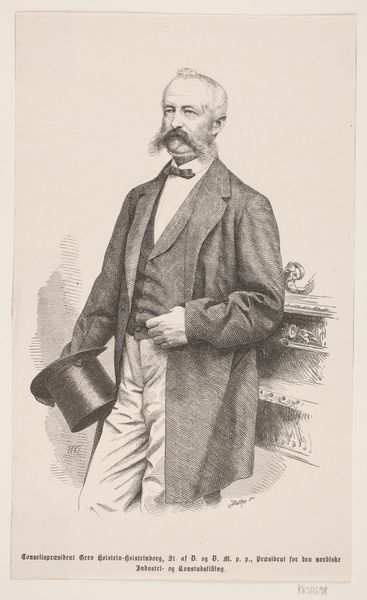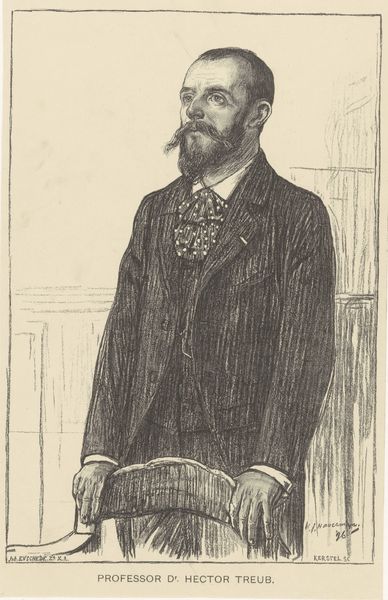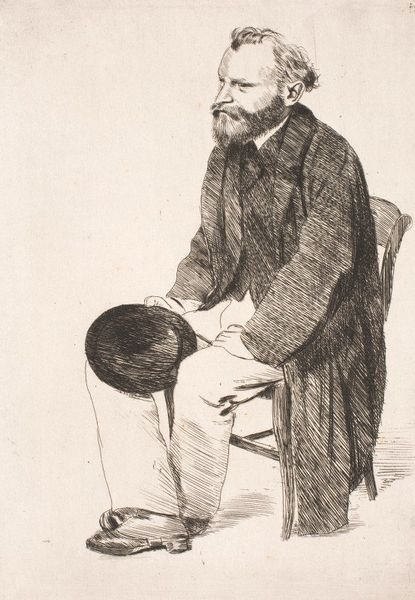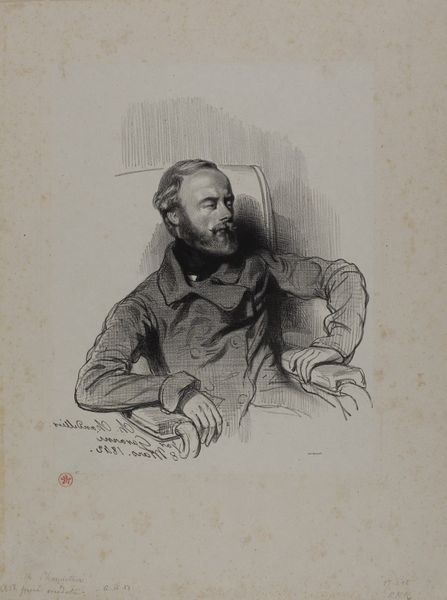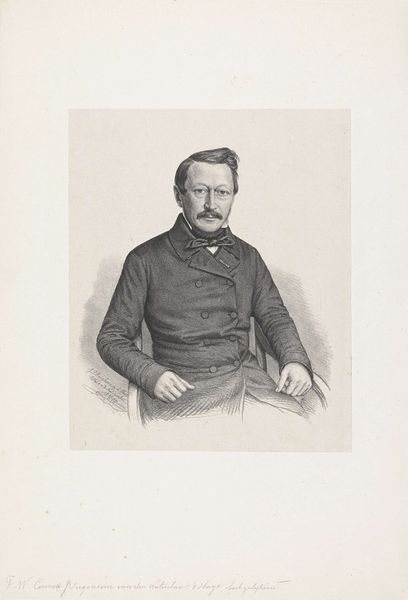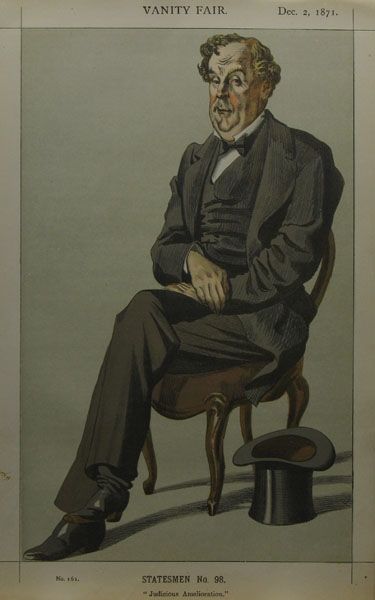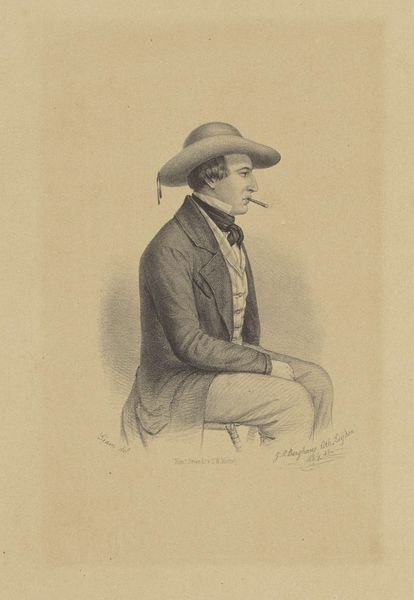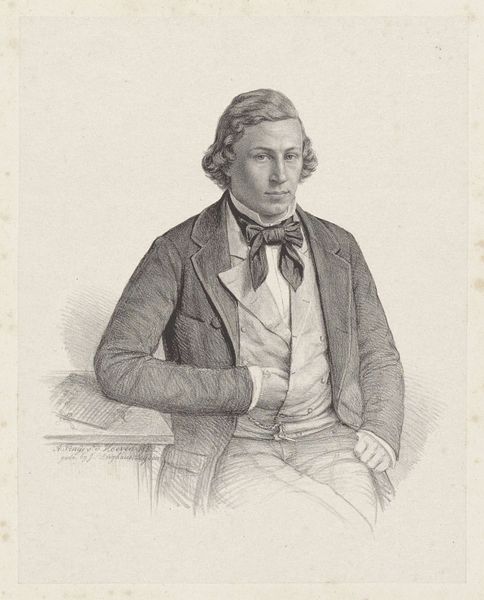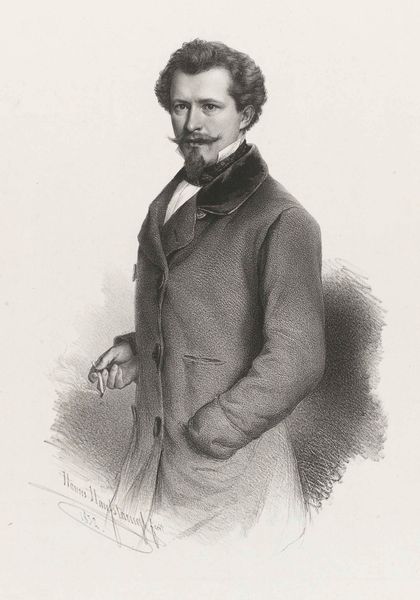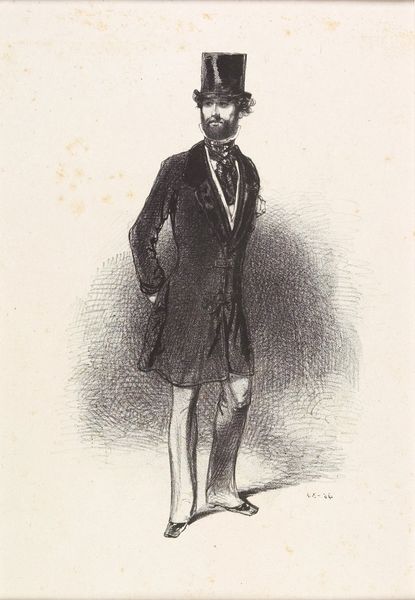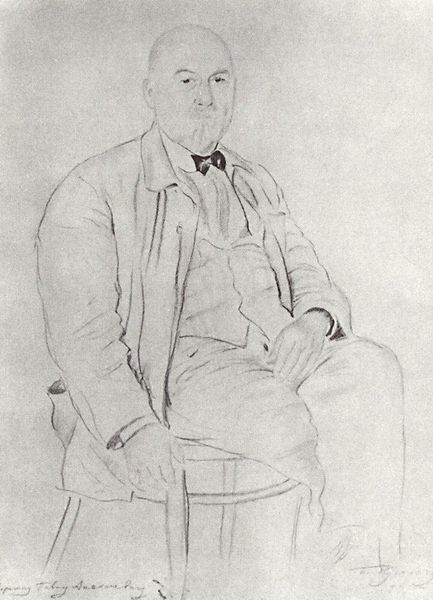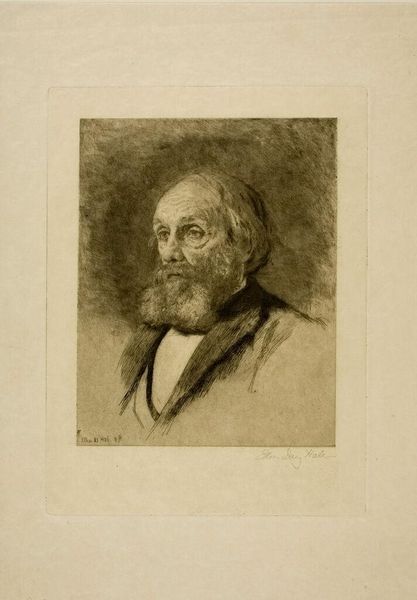
Vuk Karadžić, Serbian philologist, linguist and one of the most important reformers of the modern Serbian language 1865
0:00
0:00
Copyright: Public domain
Editor: Here we have Josef Kriehuber's portrait of "Vuk Karadžić, Serbian philologist, linguist and one of the most important reformers of the modern Serbian language", created in 1865. It seems to be graphite on paper. What strikes me is the almost photographic detail achieved through drawing. What aspects of this work stand out to you? Curator: The composition relies heavily on contrasting textures. The sitter's face, rendered with fine, almost scientific precision, against the looser rendering of his clothing and the background. Notice how the directionality of the hatching creates volume, especially in the drapery of his coat. Editor: I see what you mean about the contrasting textures. So the directional hatching almost creates the form itself, defines it. How does that impact our perception? Curator: It encourages the viewer to decode the image actively. The artist isn't simply representing Karadžić; he's presenting a constructed image where the artistic process itself is evident. Are you drawn to a particular area of the composition? Editor: Definitely the face. The detail is so striking in contrast to the rest of the sketch, which has broader strokes. The eyes really capture your attention. Curator: Indeed. The linear precision creates a sense of psychological intensity. The textures work to emphasise the sitter's intellectual engagement through sheer intensity, using semiotic language to emphasize key components. A study in form as symbolic meaning. Editor: That’s interesting, because before I only saw a detailed drawing, now I see there are different formalist strategies the artist used. Thank you for this insight. Curator: It was a pleasure; another layer revealed through analysis of its artistic architecture.
Comments
No comments
Be the first to comment and join the conversation on the ultimate creative platform.
